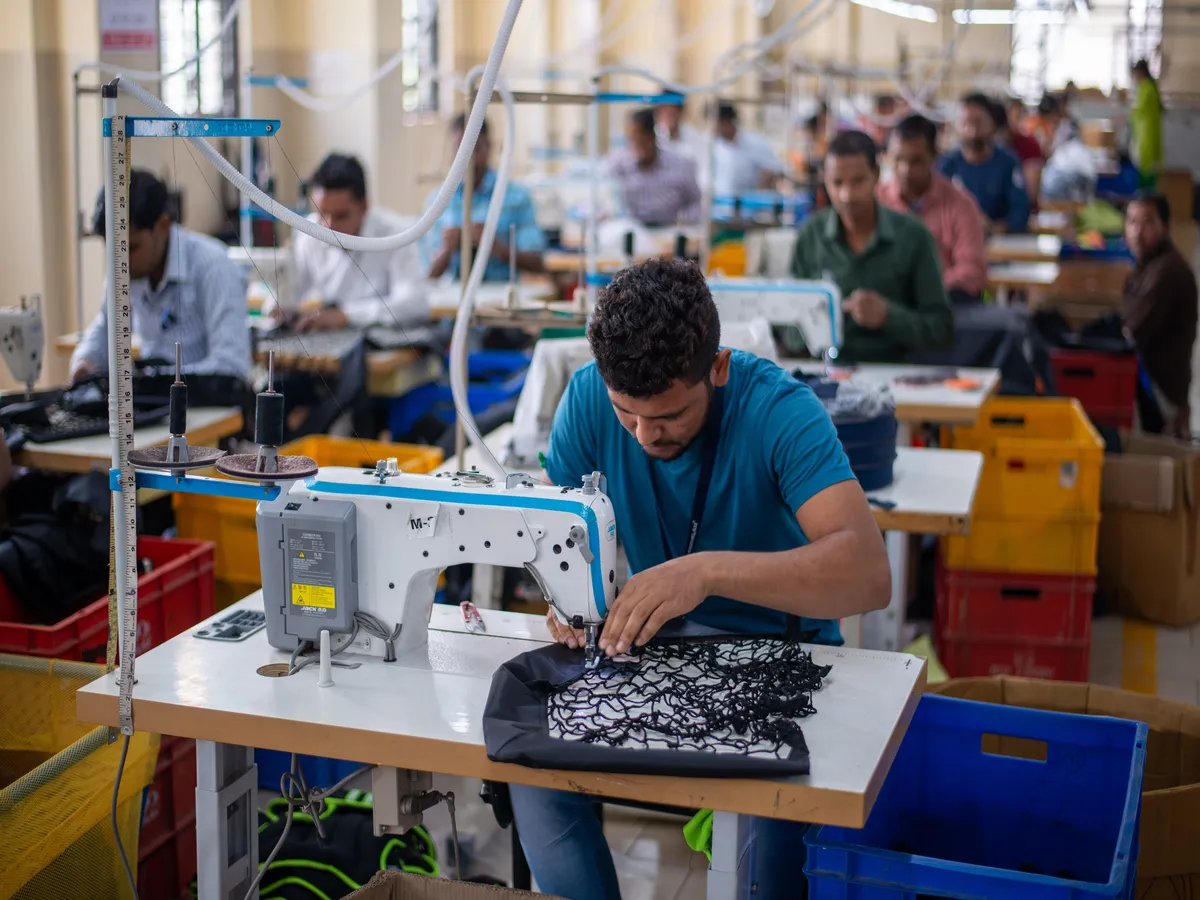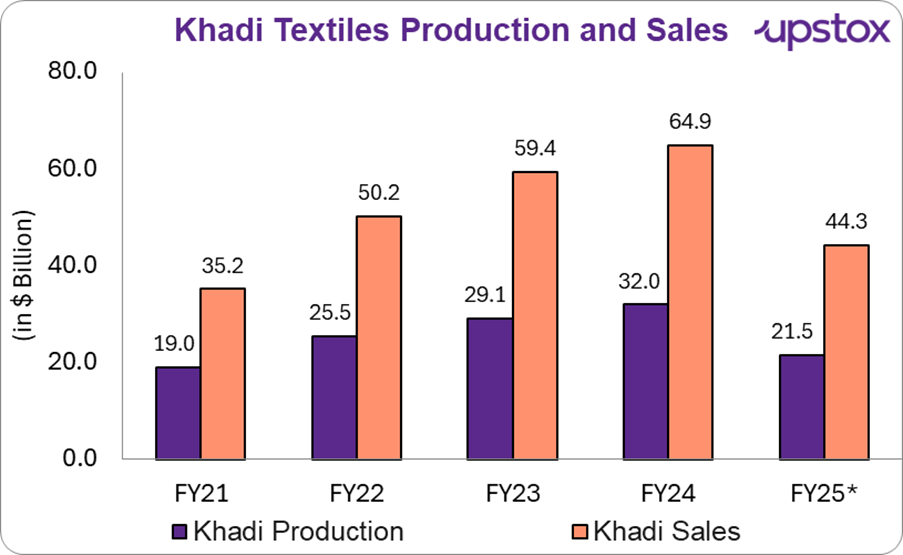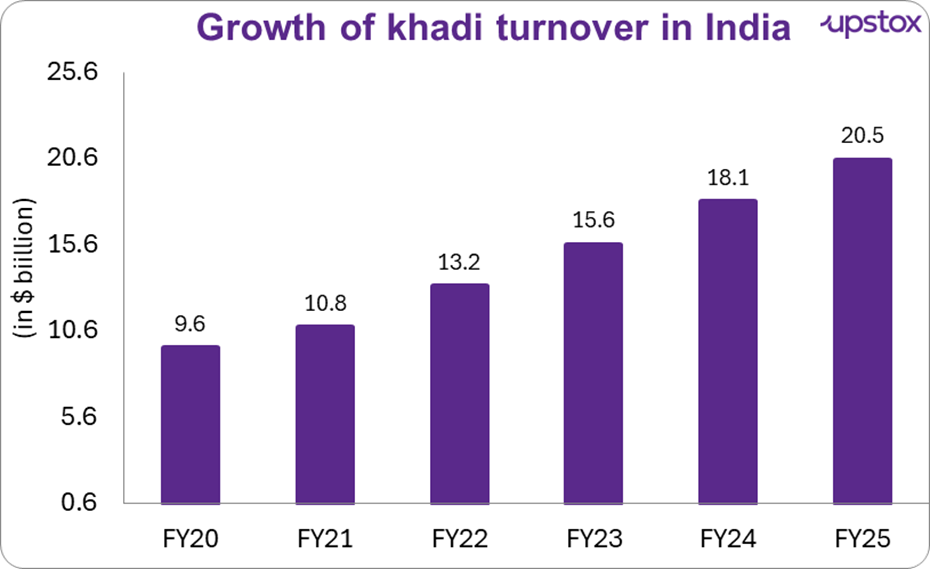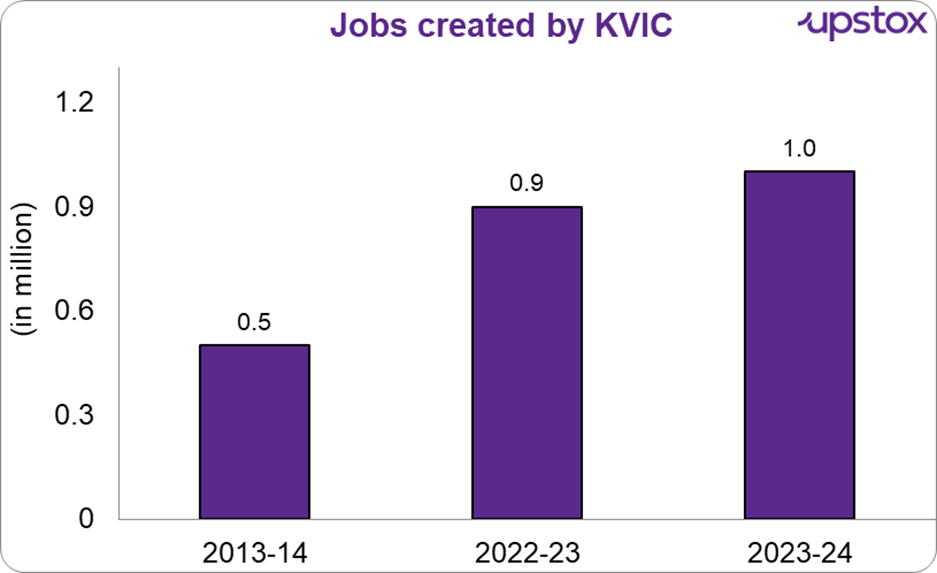Upstox Originals
Khadi’s comeback: Weaving heritage into India’s sustainable future
.png)
5 min read | Updated on May 22, 2025, 18:30 IST
SUMMARY
Woven from the spirit of India’s freedom struggle, Khadi is experiencing a powerful revival. Beyond heritage, it now stands as a modern symbol of sustainability and rural empowerment. With growing artisan participation and record-breaking growth led by KVIC, Khadi is stitching its place into the heart of India’s fashion and economy.

In FY 2024–25, Khadi and Village Industries Commission reported a record turnover of $20.5 billion
Khadi is not just a fabric — it's a legacy woven with the threads of India's freedom struggle and cultural pride. Rooted in pre-independence history, this humble handspun cloth has carried generations of tradition and resilience.
The Khadi and Village Industries Commission (KVIC) has been vital in revitalising India’s Khadi sector. With consistent efforts and a clear focus on rural development and sustainable fashion, KVIC has helped transform Khadi into a modern symbol of empowerment and eco-conscious living. As the global focus shifts to sustainability and local craftsmanship, Khadi is making a powerful comeback.
The proof – khadi sales have consistently been higher than the domestic production, and the gap continues to widen! India has started to import more raw cotton to ensure that the demand for Khadi is consistently met

Source-Fibre2Fashion; *Upto 30.11.2024
Here are some key achievements of KVIC:
Record-breaking turnover
Khadi has experienced a sharp increase in demand, leading to significant turnover growth. In FY 2024–25, KVIC reported a record turnover of $20.49 billion, marking a 447% rise from $3.7 billion in FY 2013–14. From $9.6 billion in FY20, the numbers have climbed steadily, reflecting its growing popularity nationwide.

Source: Economic Times
Employment generation
KVIC’s initiatives in Khadi and village industries have substantially contributed to rural job creation. In FY 2023–24 alone, the employment generation witnessed an 82% increase compared to FY 2013–14. The Khadi and Village Industries Commission (KVIC) employs approximately 1.94 crore people.

Source: PIB
Enhanced artisan wages
Continuing its focus on artisan welfare, KVIC has announced a 20% wage hike for Khadi spinners, effective from 1 April 2025—raising their pay from ₹12.50 to ₹15 per hank. According to the PIB, in the last 11 years, the Government has made a historic increase of 275% in the wages of Khadi artisans. This move aims to strengthen traditional skills and uplift the quality of life for those involved in the Khadi ecosystem.
Through these concerted efforts, KVIC continues to play a pivotal role in promoting Khadi, fostering rural development, and preserving India's rich textile heritage.
Major schemes being implemented by KVIC
| Scheme | Key activities |
|---|---|
| Modified Market Development Assistance (MMDA) | Launched in 2016–17 to allow Khadi to be sold at market-driven prices. Offers 35% support on Prime Cost for Cotton/Muslin, Wool, Polyvastra; 20% for Silk Khadi. In 2023–24, ₹265.6 crore was disbursed under MMDA for Khadi and Polyvastra. |
| Interest Subsidy Eligibility Certificate (ISEC) Scheme | Offers concessional credit at 4% interest to Khadi institutions. Interest difference borne by KVIC. In 2023–24, ₹38.4 crore was disbursed to 1,097 Khadi institutions under ISEC for Khadi and Polyvastra. |
| Village Industries | Per worker production does not exceed ₹1 lakh in plains and ₹1.5 lakh in hilly areas. In 2023–24, village industries, including PMEGP units, recorded ₹1,05,091.68 crore in production, ₹1,49,177.12 crore in sales, and provided cumulative employment to 182.31 lakh people. |
Source- Ministry of Micro, Small and Medium Enterprises
These schemes collectively aim to empower rural entrepreneurs, revive traditional industries, and foster sustainable employment across India.
Youth-Led initiatives promoting Khadi
Young designers and startups are reshaping Khadi’s image by blending traditional craftsmanship with contemporary styles that resonate with millennials and Gen Z. For example, designers like Rajesh Pratap Singh and Anavila Misra incorporate Khadi into modern silhouettes and sustainable fashion lines, making it trendy and accessible.
Additionally, youth-led initiatives such as Khadi Lore promote Khadi’s eco-friendly values, further driving awareness and adoption among younger consumers. This fusion of heritage and innovation is helping Khadi find a fresh, fashionable identity among India’s youth.
Key challenges hindering the growth of the Khadi industry
The Khadi industry faces several hurdles impacting its growth and affordability. Traditional charkhas have limited production capacity, and it is slow and causes physical exertion to the spinners, making it hard to scale.
GST implementation has further strained the sector, while pre-GST taxes ranged from 0% to 14.30%, post-GST rates have increased to 12%–28% for many products.
Although Khadi yarn, Gandhi topi, and the national flag remain exempt, the overall rise in product pricing has made Khadi less accessible to the common man. The resurgence of the pink bollworm, due to poor pest control and monocropping, has also affected cotton yield and fibre quality, further weakening the supply chain.
Final thoughts
Khadi’s transformation from a freedom-era symbol to a modern economic catalyst marks a defining moment in India’s development narrative. Its resurgence is not just symbolic—it is strategic, sustainable, and inclusive. With KVIC’s continued focus on reforms and impact-driven schemes, Khadi is evolving as both a cultural treasure and a key livelihood enabler.
The cloth that once draped revolutionaries is now threading a new revolution—one of empowerment, sustainability, and national pride. In this revival of rural craftsmanship, Khadi is not merely surviving—it is flourishing.
By signing up you agree to Upstox’s Terms & Conditions
About The Author
Next Story
